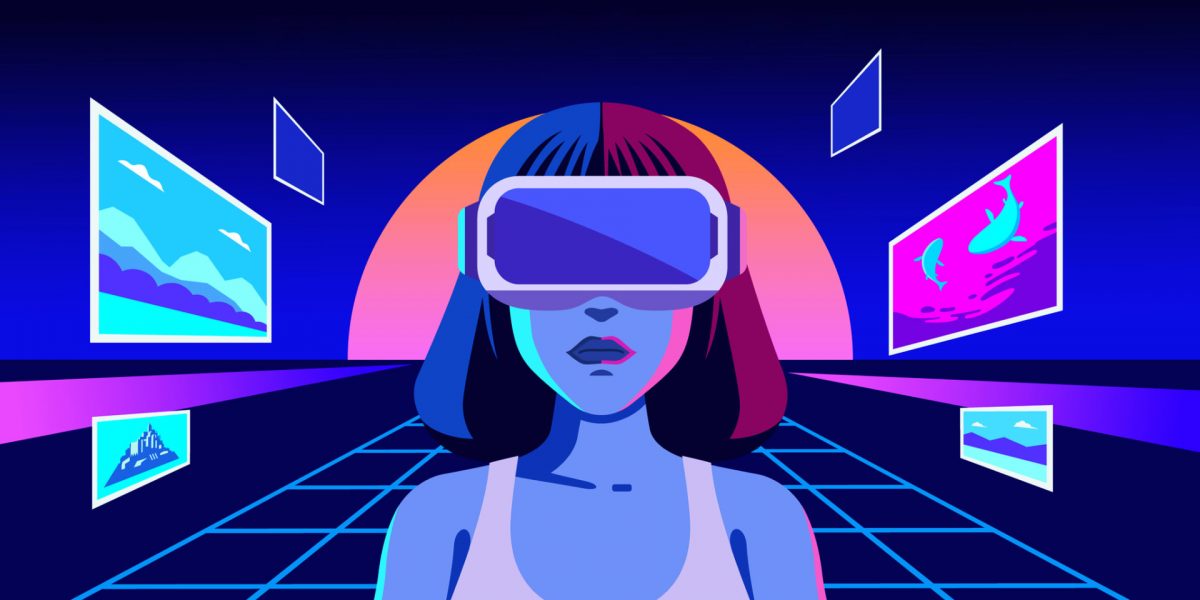As an industry we have only really been talking about the metaverse for the last few months, but there are already huge numbers of articles and futurologists predicting how it will change advertising and marketing (and our lives) forever.
So instead of adding to the noise about where the industry is going and divining into my crystal ball about the future, here are my top tips on what mass appeal brands should be doing right in the metaverse.
The short answer is NOTHING.*
*Unless your audience is a niche, high net worth, early adopter audience, in which case go for it.
The long answer is the definition of the Metaverse (and what is part of it or not) is still a bit cloudy, but it essentially a limitless space that combines our physical world with the digital world through technologies like VR, blockchain and NFT (non-fungible tokens).
Gaming and Mass Multiplayer Online games in particular (think Fortnite, Roblox or Fall Guys) although similar to how the Metaverse might one day be used and engaged with, are not actually part of the Metaverse – you cannot for example buy an item on Fortnite and then use it in Roblox. They are all distinct multiverses, with their own currencies, experiences and technologies.
These multiverses, however, are something that mass appeal brands should be thinking and engaging with, especially if they want to reach Gen Z audiences. Nearly 3 billion people globally play games, from casual mobile gaming (like Candy Crush or Wordle) to more involved console and PC gamers (everything from World of Warcraft to FIFA). Plus, although these games are not in the metaverse yet, the learnings you will get from being a brand in a multiverse could set you up for metaverse success in the future.
Ok, I hear you cry, but how? How can we get into these multiverses?
Level 1: Just be present
Massive digital worlds mean massive amounts of in-game furniture for brands to include their messages – this is called native in-game advertising. Spaces include in-game OOH and sports hoardings – so the typical places you would see advertising in the real world – as well as natural down times in gaming such as the pause screen or between levels.
According to in-game advertising media specialists Adverty, 2/3 of gamers said in-game advertising had no negative effect on their experience and 43% of gamers to were prepared to watch advertising in exchange for free gaming.
Many mainstream brands are already experimenting with these media formats and how being present and visible in these multiverses can drive brand awareness and affinity.
Level 2: Get involved
Think about how your brand could enhance the gaming experience. Fashion brands in particular have forged ahead with this in games where skins (the outfits, or sometimes characters, that you can play as) have a very close link to the products they provide in the real world.
However, for brands whose products do not yet have a role or obvious counterpart in the multiverse, there are still opportunities to enhance their gaming experience in the real world.
Burger King is a great example of this, using a very affordable sponsorship deal of Stevenage FC in the real world, they became a very visible sponsor on the shirts in the Stevenage FIFA team as well. Burger King then offered gamers, who shared goals they scored using Stevenage shirted players on Twitter, exclusive rewards and offers on their IRL Burger King products. Over 250K goals were shared, creating 1.5 million impressions online.
Brands should think about how to bridge the gap between on and offline, through exclusive discount codes or secret off-menu items that gamers can only see in-game or that are unlocked by interacting with your in-game adverts. Or, alternatively unlocking in-game rewards by purchasing from your brand IRL.
Level 3: Create your own
Games like Roblox, Fortnite and Minecraft are not just digital worlds to explore, they have game creation tools – accessible game development tools that allow users to create their own experiences and games within their worlds. This means anyone, including brands, can design their own experiences without necessarily needing to collaborate with the original game developers.
Music concerts, like Lil Naz X in Roblox have been watched by 7 million people on YouTube, whilst brands like Nike and Vans have created mini games within Roblox where gamers can unlock digital and real life merch by playing.
Many of these platforms have a young average player age, e.g. Roblox players average 10 years old, so suitability of brands and content needs to be considered, but compared to IRL experiential which is limited by consumers proximity to the event, experiential in games allows brands to reach millions of potential consumers at a time.
So the only question left to ask is, are you ready to play?
By Ellie Boxall



